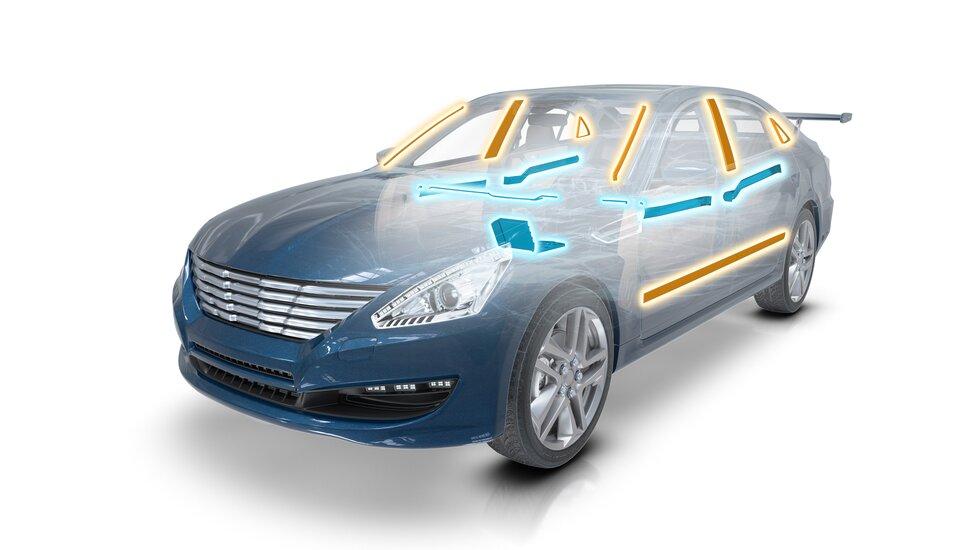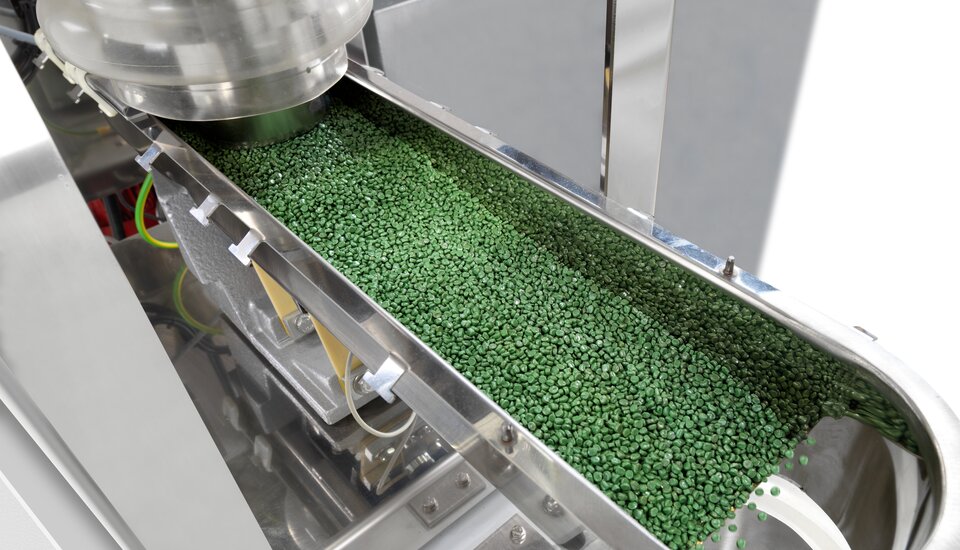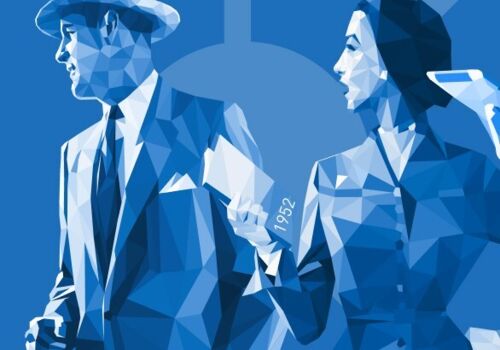
Trendgineering
FiberForm for large-series production
| Dr. Ing. Mesut Cetin, Michael Thienel
One million door module carriers at automotive supplier Brose
From the beginning of 2018, Brose has been delivering more than one million door module carriers annually to the automotve sector. Those are produced with the Krauss Maffei Fiberform Technology. Thanks to the use of continuous fiber-reinforced thermoplastic organosheets, reduced wall thicknesses and an integral design, the module reduces weight by 1.6 kg per vehicle compared to a standard injection molded component, and it is also more crash-proof.
In 1966, Brose was the first manufacturer to introduce door modules to the market that combined essential functions on one carrier plate. In addition to window regulators, these functions included the latchmodule, central locking, loudspeaker and wire harness. The family-owned company gradually developed from a component supplier for window regulators to a system integrator for complete doors.
Vehicle doors will always remain an important component in the automotive industry, no matter whether the vehicles are powered by electricity or conventional internal combustion engines. An automobile door usually consists of three main components:
- door outer shell
- door module carrier
- door inner shell
The outer shell of the door is usually made of a material with good paintable properties and is as visible to the customer as the inner shell of the door with which the passengers comes into contact in the car.
A component that is out of sight but important and functional is the door module carrier. This is where the loudspeakers, latch module, wire harnesses, window regulator, window attachment and guidance and crash sensors are integrated. The history of the door module development is comparable to other automotive components. Initially, the carriers were made of metal, which had to be shaped into the correct shape. The guide rails were connected to the carrier in a separate process step so that the materials firmly bonded. Over the years and in the course of the consistent further development of the injection molding process and materials, many automotive components in steel and aluminum design have been substituted with plastic materials.


This is also what happened to the door module carrier, which was manufactured as a compact injection molding component without fiber reinforcement and then with short fiber reinforcement. The window guidance was first mounted on the carrier in a later, separate step before they came to be fully integrated in the injection molding process. The latter is still common practice among many automotive component suppliers.
Dr. Mesut Cetin
informs about the opportunities with the FiberForm technology.
Contact
mesut.cetin@kraussmaffei.com















